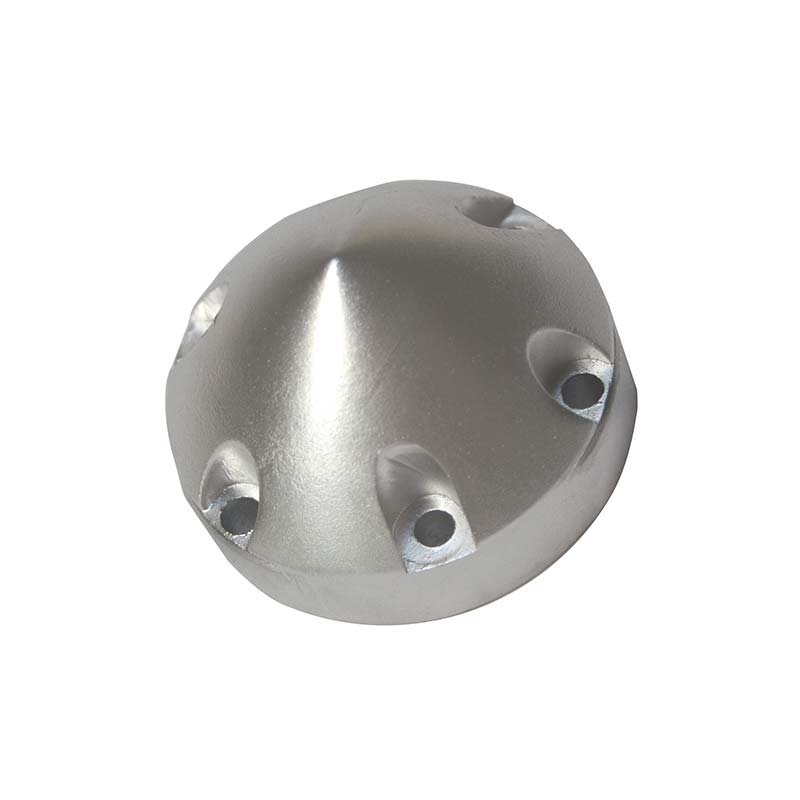Tecnoseal
Max Prop Technoseal Anode (6 Hole) - 44mm
Max Prop Technoseal Anode (6 Hole) - 44mm
Couldn't load pickup availability
Max Prop Anode (6 Hole) - 44mm
Anode suitable for use Max Props.
O/Diameter: 68mm. Internal (Max. Prop) Diameter 44mm.
Max Prop anodes are a type of sacrificial anode specifically designed to protect the Max Prop or other types of folding or feathering propellers on boats from corrosion, particularly in marine environments. These anodes are typically made of zinc, aluminum, or magnesium, similar to other anodes, and they play a critical role in preventing galvanic and electrolysis-induced corrosion that can damage your boat's metal components.
Here’s a breakdown of what Max Prop anodes are and how they function:
What Are Max Prop Anodes?
Max Prop is a well-known brand of folding or feathering propellers, which are designed to improve efficiency and reduce drag while sailing. These propellers are often made of bronze or other metal alloys, which are susceptible to corrosion when exposed to saltwater or other electrolytes.
Max Prop anodes are sacrificial anodes specifically designed for use with these types of propellers. They are usually attached to the hub of the propeller and help protect the propeller and its surrounding components from the damaging effects of galvanic corrosion.
Why Do You Need Max Prop Anodes?
In a marine environment, galvanic corrosion occurs when different metals (such as bronze, which is common in propellers, and aluminum or zinc, which are common in sacrificial anodes) are electrically connected and immersed in seawater. The more "noble" metal (the one that is less likely to corrode) is protected, while the "less noble" metal (anode) will corrode instead.
If left unprotected, a Max Prop (or similar propeller) can deteriorate over time due to this process, leading to damage, wear, and even failure of the propeller. By installing Max Prop anodes, you ensure that the sacrificial material corrodes instead of the propeller, thus prolonging its lifespan.
Key Features of Max Prop Anodes:
-
Sacrificial Protection: As with all sacrificial anodes, Max Prop anodes are designed to corrode over time, protecting the more valuable parts of your propeller from degradation.
-
Material Choices: Max Prop anodes are typically made from zinc, aluminum, or magnesium, with the material chosen based on the environment:
- Zinc anodes are commonly used in saltwater environments.
- Aluminum anodes are more suitable for brackish water or areas with a higher salinity.
- Magnesium anodes are ideal for freshwater.
-
Specific Fitment: These anodes are designed to fit Max Prop propellers, so they are tailored to the specific design and size of the prop. This ensures maximum effectiveness in protecting the propeller hub and nearby components.
-
Durability and Longevity: While the anode will gradually corrode as it performs its protective role, it should last a full season or more, depending on how much exposure it has to corrosive elements like saltwater.
How Do Max Prop Anodes Work?
Max Prop anodes work by creating an electrical current between the sacrificial anode and the metals they are protecting (e.g., the propeller and shaft). The anode "sacrifices" itself, corroding and preventing the propeller and other underwater metal parts from experiencing corrosion.
This protection is particularly important for:
- Propeller hubs
- Shafts
- Struts and other parts of the propulsion system
The anode needs to be in close proximity to the metal surfaces to ensure an effective current flow and protection.
Installation:
Max Prop anodes are typically easy to install and replace. They are usually attached via set screws or fasteners directly to the propeller hub. It's important to ensure a secure connection for proper electrical conductivity between the anode and the propeller.
Maintenance and Replacement:
-
Inspect Regularly: Max Prop anodes should be inspected at least once a season, especially after long periods in the water or exposure to harsh conditions.
-
Replace When Necessary: If the anode is more than halfway corroded, it should be replaced to ensure continued protection. Not replacing the anode could result in damage to your propeller or other underwater parts due to corrosion.
-
Monitor Corrosion: If you notice increased corrosion on your propeller or nearby metal parts, this could indicate that the anode has worn down and needs replacing.
Additional Considerations:
- Proper Material Selection: Always select the right material for your water environment (saltwater, brackish, or freshwater). Using the wrong material can lead to inefficient protection.
- Ensure Compatibility: Max Prop anodes are designed specifically for Max Prop propellers. If you use a different brand or type of folding propeller, make sure to select an appropriate anode designed for that specific model.
Share


